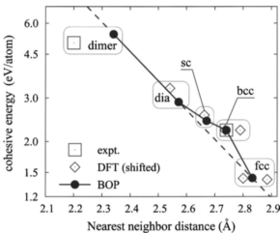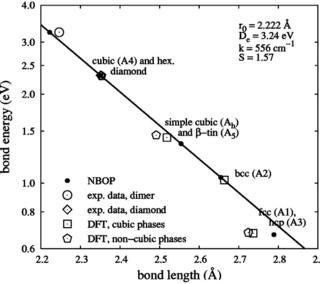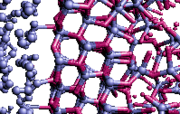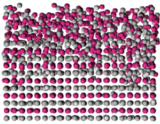Analytical interatomic potential for modeling nonequilibrium processes in the W-C-H system
N. Juslin,
P. Erhart,
P. Träskelin,
J. Nord,
K. Henriksson,
E. Salonen,
K. Nordlund,
and
K. Albe
Journal of Applied Physics 98, 123520
(2005)
doi: 10.1063/1.2149492
Download PDF

A reactive interatomic potential based on an analytical bond-order scheme is developed for the ternary system W-C-H. The model combines Brenner’s hydrocarbon potential with parameter sets for W-W, W-C, and W-H interactions and is adjusted to materials properties of reference structures with different local atomic coordinations including tungsten carbide, W-H molecules, as well as H dissolved in bulk W. The potential has been tested in various scenarios, such as surface, defect, and melting properties, none of which were considered in the fitting. The intended area of application is simulations of hydrogen and hydrocarbon interactions with tungsten, which have a crucial role in fusion reactor plasma-wall interactions. Furthermore, this study shows that the angular-dependent bond-order scheme can be extended to second nearest-neighbor interactions, which are relevant in body-centered-cubic metals. Moreover, it provides a possibly general route for modeling metal carbides.



